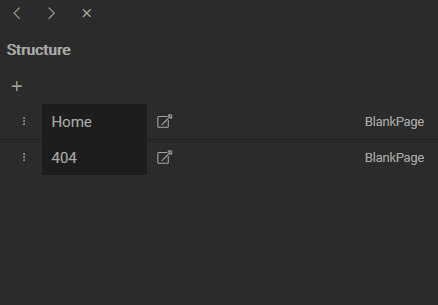Home and 404
Each project comes with Home and 404 pages, and they cannot be removed.
Create new BlankPage(s)
You can create one or multiple BlankPages at once.
Auto-generated path based on the page name
As soon as you rename the page, the path for it is auto-generated. For example, if you name the page 'About', you can immediately access it at '/about'.
Common Usage
There are unlimited possibilities how you can use BlankPage. It depends on your design intention. Some examples:
You can use it as a landing page in a campaign.
Home page will usually include indexes from various collections, for example, index of Articles or index of Events which are rendered through a slider.
About page can include index of persons who are employees or team members, contact form and integrated google map.